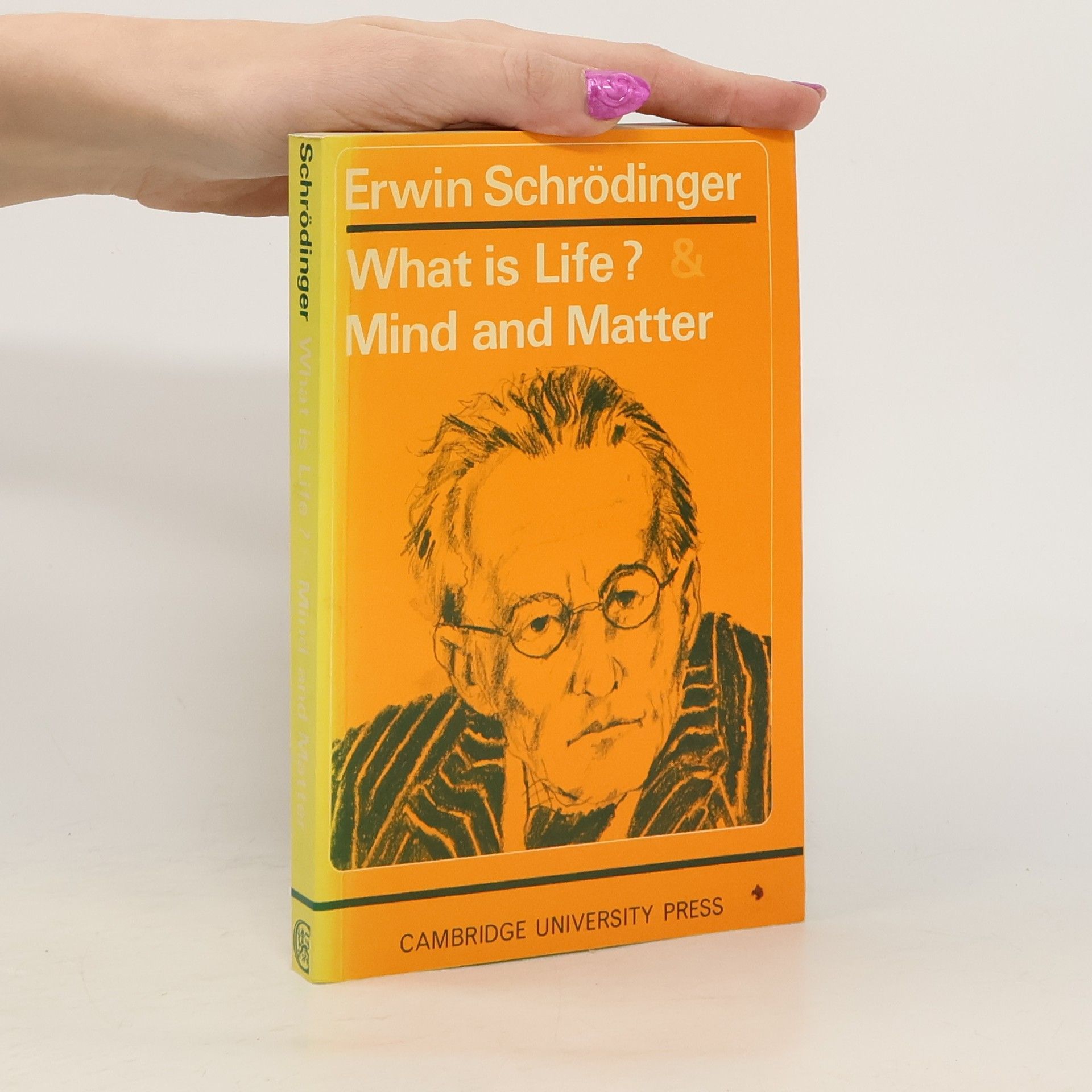'Nature and the Greeks' and 'Science and Humanism'
- 184bladzijden
- 7 uur lezen
The text of two series of lectures given by one of the great philosopher- scientists of the twentieth century.
Erwin Schrödinger was een Oostenrijkse natuurkundige wiens fundamentele bijdragen aan de kwantumtheorie de golfmechanica vestigden. Hij formuleerde de golfevening, die de fundamentele rol ervan in de kwantummechanica en de equivalentie met de matrixmechanica onthulde. Schrödinger stelde ook een nieuwe interpretatie voor van de fysische betekenis van de golffunctie, wat nieuwe perspectieven bood op het kwantumgebied. Zijn vooruitgang in de atoomtheorie leverde hem de Nobelprijs voor Natuurkunde op.







The text of two series of lectures given by one of the great philosopher- scientists of the twentieth century.
Nobel laureate Erwin Schrödinger’s What is Life? is one of the great science classics of the twentieth century. A distinguished physicist’s exploration of the question which lies at the heart of biology, it was written for the layman, but proved one of the spurs to the birth of molecular biology and the subsequent discovery of the structure of DNA. The philosopher Karl Popper hailed it as a ‘beautiful and important book’ by ‘a great man to whom I owe a personal debt for many exciting discussions’. It appears here together with Mind and Matter, his essay investigating a relationship which has eluded and puzzled philosophers since the earliest times. Schrodinger asks what place consciousness occupies in the evolution of life, and what part the state of development of the human mind plays in moral questions.
Reprint of a classical book first published in 1950. This lucid and profound exposition of Einstein's 1915 theory of gravitation is essential reading.
A Nobel prize winner, a great man and a great scientist, Erwin Schrödinger has made his mark in physics, but his eye scans a far wider horizon: here are two stimulating and discursive essays which summarize his philosophical views on the nature of the world.
This volume contains new publications (typeset in LaTeX) of two essays by Schrödinger "Our Image of Matter" (1952) and "What is an Elementary Particle?" (1957) and his book Expanding Universes (1956). The collection intends to provide an idea of Schrödinger's views on the whole world - from the quantum level to the Universe. While the first two essays are written for a wider audience the third work - Expanding Universes - is more technical and would be also of interest to physicists and physics students.
This is a new publication of eight of Schrödinger's "Science, Art and Play""The Law of Chance""Indeterminism In Physics""Is Science a Fashion of the Times?""Physical Science and the Temper of the Age""What is a Law of Nature?""Conceptual Models in Physics and their Philosophical Value""The Fundamental Idea of Wave Mechanics" (Schrödinger's Nobel Address delivered at Stockholm on December 12, 1933)
This collection contains a new publication of the Heisenberg, Born, Schroedinger and Auger, On Modern Physics and the Nobel lectures of Werner Heisenberg, Erwin Schroedinger and Max Born.In this collection three Nobel laureates and a renowned authority on space exploration discuss a wide range of issues - from lessons that can be learned from the ancient Greek philosophers, to the advancements in fundamental physics in the twentieth century, to the dark implications of scientific discoveries, to the methods and limits of scientific knowledge - in a language that is understandable by a wide audience.
This is a new publication of the Collected Papers On Wave Mechanics by Erwin Schrödinger - one of the founding fathers of quantum physics.This valuable book should prove attractive to experts, students and all interested in the origin, the foundations and the philosophy of quantum physics. A particular reason for this is that Schrödinger discusses two issues which are still (in the 21st century) unsettled - the physical meaning of the wave function and the statistical nature of quantum physics. Like Einstein, Schrödinger was not satisfied with the statistical description of quantum "The question whether the solution of the difficulty is really to be found only in the purely statistical interpretation of the field theory which has been proposed in several quarters must for the present be left unsettled. Personally I no longer regard this interpretation as a finally satisfactory one, even if it proves useful in practice. To me it seems to mean a renunciation, much too fundamental in principle, of all attempt to understand the individual process."